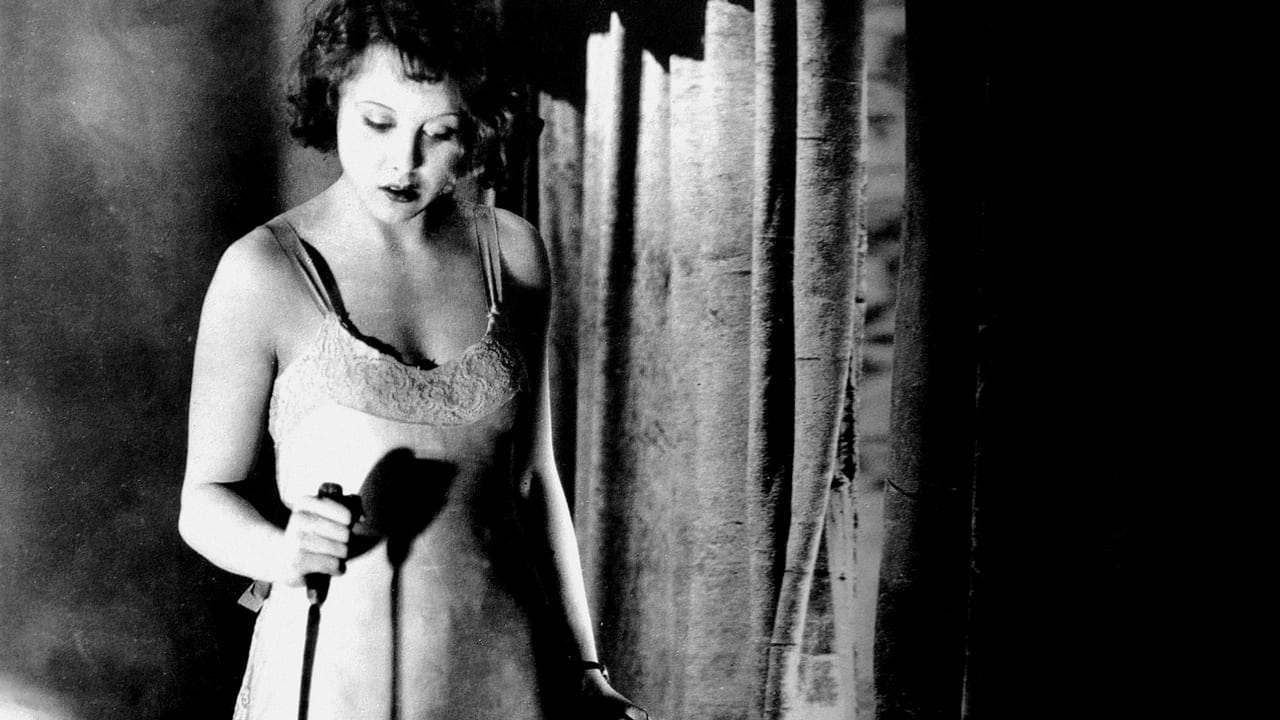

"Blackmail" is more interesting than "The Lodger", but was just as ineffective at keeping my attention.I probably didn't concentrate on it for more than a few minutes at a time.I will describe the plot now, so that this review is long enough:A young lady has a man attempt to force himself on her and she kills him with a butter knife (which doesn't seem like a particularly lethal weapon).She gets away with the crime and is blackmailed by someone who knows what she did.The main actress was much better looking than the one in "The Lodger". I think she was also a more effective performer.
... View MoreAlfred Hitchcock's first talkie is an intriguing film, not entirely successful but still more enjoyable than some of the other films Hitch made around this time. The story starts with a woman cheating on her boyfriend, a Scotland Yard detective. When the man she's with tries to rape her, she kills him in self-defense. Afterwards a criminal who pieces it together blackmails her and her detective boyfriend.A little creaky but that's to be expected under the circumstances. The film started out being made as a silent before it was decided to turn it into a sound picture. In spots it reverts back to a silent (without intertitles). This actually works in the film's favor. There are some really nicely done lengthy sequences with no dialogue, such as her walk home after she's killed the guy, punctuated by a scream. Good acting all around. Nice direction from Hitch. The museum climax is excellent; an early example of the defining set pieces that would become a Hitchcock trademark. Definitely worth a look if you're a fan. Or even if you're not, provided you enjoy pictures from this period. Not everyone does, unfortunately.
... View MoreDirected by Alfred Hitchcock, who adapted the Charles Bennett play, this slightly above average drama is credited with being the first British sound film. Unfortunately, the sound quality is abysmal. After watching it on TCM, I learned from Robert Osborne that the lead actress's (Anny Ondra, from Austria-Hungary - now Poland) lines were being dubbed in real-time (by Joan Barry, uncredited) off "stage", which helped explain a bit of this (but not all of it).This film opens with a 10 minute long sequence, done strictly with music like a silent film (since the film was shot during the transition period; the silent version released is said to be better than this sound one), which is outstanding. It establishes several locales and police officer characters.Alice White (Ondra), who maintains an "on again, off again" relationship dating Detective Frank Webber (John Longden), flirts with an artist (Cyril Ritchard) while dining with her beau. After dumping the detective, she goes with the artist to his apartment where she goes too far to be shocked by his advances. When he won't be denied her sexual favors, she kills him with a bread knife and flees. However, she was seen leaving by a moocher (Donald Calthrop) who was hanging out nearby and entered the apartment building after she fled.After a sleepless night walking the streets in frightened despair, Alice sneaks upstairs to her bedroom which happens to be above her family's cigar shop. Her mother (Sara Allgood) visits her room just after she'd gotten into bed and tells her to come have breakfast. Alice joins her family (her father is played by Charles Paton) and a neighbor who, naturally, are discussing the (now discovered) murder that occurred the previous night. Preoccupied, Alice hears nothing besides the work KNIFE being spoken over and over again.Detective Webber arrives and has a brief conversation with his girlfriend, in the shop's phone-booth, about the glove of hers he'd found, and concealed from the other detectives, at the crime scene. While showing it to her, the moocher turned blackmailer, enters the phone-booth to reveal he's got her other glove! My favorite scene follows, and I won't spoil it other than to say that the prey (the Scotland Yard detective and his girl) turn the tables on their blackmailer, which leads to the requisite Hitchcock chase. This transition, including the realization on the detective's and then the blackmailer's faces, is done quite well.Additionally, it's interesting to see flashes of the master that Hitchcock would become: the use of an institution, in this case a museum complete with an Egyptian statue and harrowing rooftop, as a backdrop for the chase (ala Saboteur (1942) and North by Northwest (1959), and the women's screams (Ondra's with the landlady's that discovers the body) that are combined ala The 39 Steps (1935) (e.g. with a train whistle).
... View MoreThis is a Tale of two formats. The Silent and the Sound Film. Referred to early on as "Talkies", it was a rather limited labeling since the Sound Era was so much more than that. After all, there was Music and Sound Effects that so often added Depth and Delight to the Art Form.Here is the First British Sound Movie and along for the ride is Hitchcock transforming a Silent Movie that probably took a lot of effort considering the Technical limitations and must have been a learn as you go procedure.It does feel a bit Manufactured at first but quickly settles in and has a number of striking and entertaining flourishes that the Director creates and His Love and Playful Style is in clear evidence. There is much here that is Masterful Manipulation and is effective nerve racking done with a staccato of Montaging that is Excellent Film Craft.The Film also contains an Ending that would be forbidden a few Years later when the Hays Code would restrict many things not the least of which is evading Punishment for a Crime. This is an underrated Movie that takes much heat for its less than smooth transition from Silent to Sound, but that takes a backseat to all the other stunning accomplishments from Hitchcocks embryonic Period.
... View More